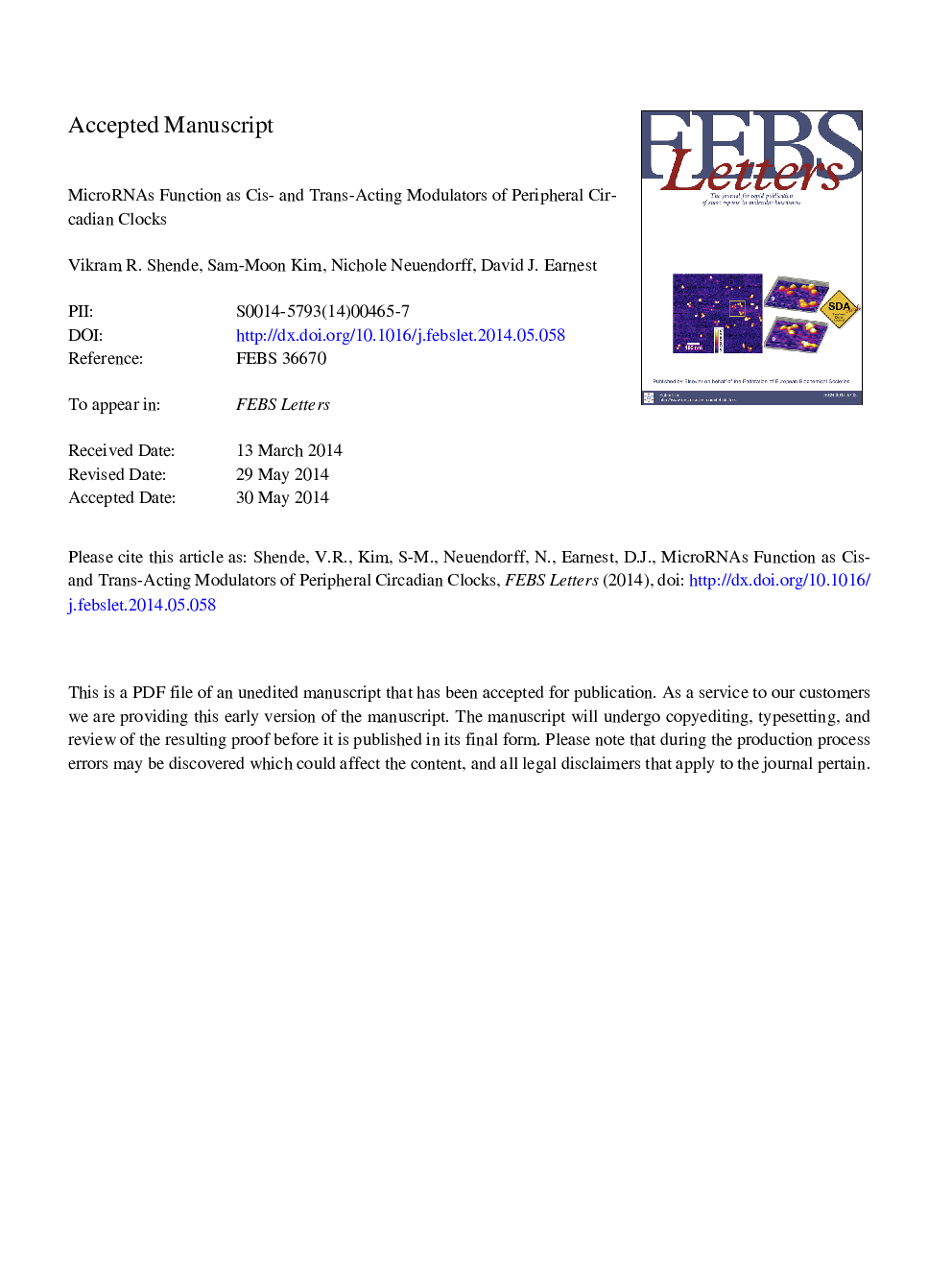| Article ID | Journal | Published Year | Pages | File Type |
|---|---|---|---|---|
| 10870169 | FEBS Letters | 2014 | 36 Pages |
Abstract
Based on their extracellular expression and targeting of the clock gene Bmal1, miR-142-3p and miR-494 were analyzed for evidence of vesicle-mediated communication between cells and intracellular functional activity. Our studies demonstrate that: miR-142-3p + miR-494 overexpression decreases endogenous BMAL1 levels, increases the period of Per2 oscillations, and increases extracellular miR-142-3p/miR-494 abundance in conditioned medium; miRNA-enriched medium increases intracellular expression of miR-142-3p and represses Bmal1 3â²-UTR activity in naïve cells; and inhibitors of vesicular trafficking modulate intercellular communication of these miRNAs and ensemble Per2 rhythms. Thus, miR-142-3p and miR-494 may function as cis- and trans-acting signals contributing to local temporal coordination of cell-autonomous circadian clocks.
Related Topics
Life Sciences
Agricultural and Biological Sciences
Plant Science
Authors
Vikram R. Shende, Sam-Moon Kim, Nichole Neuendorff, David J. Earnest,
